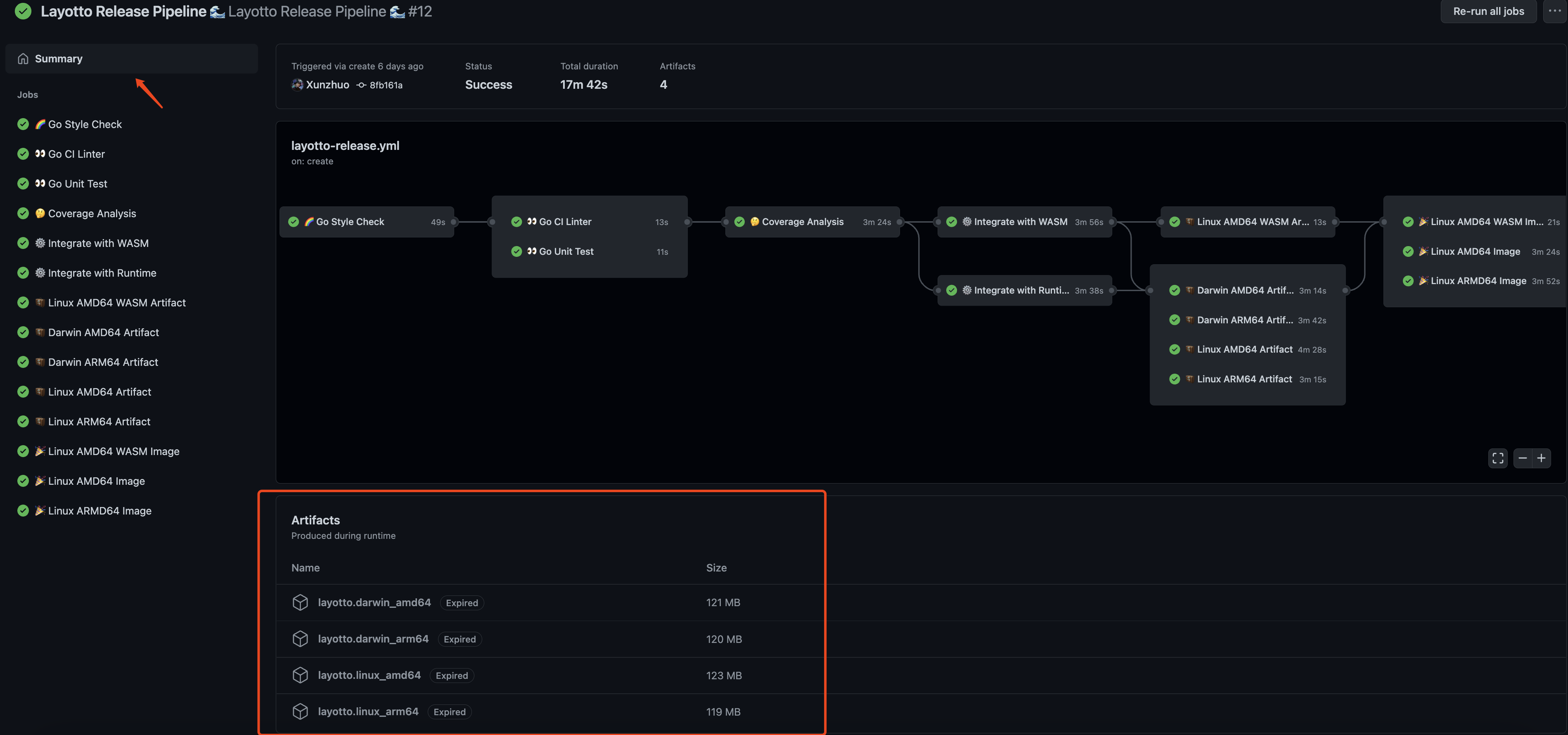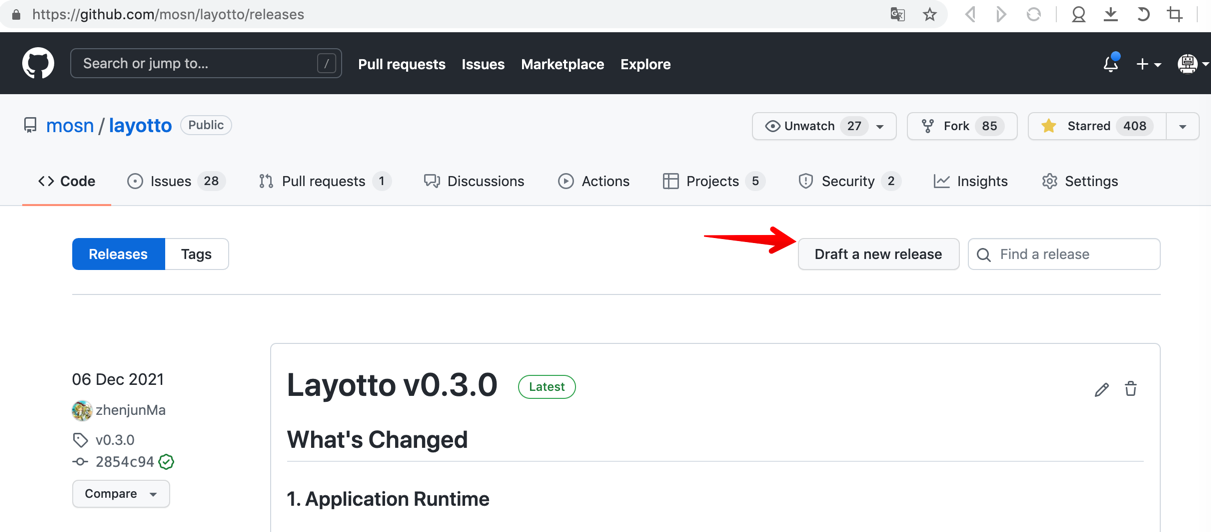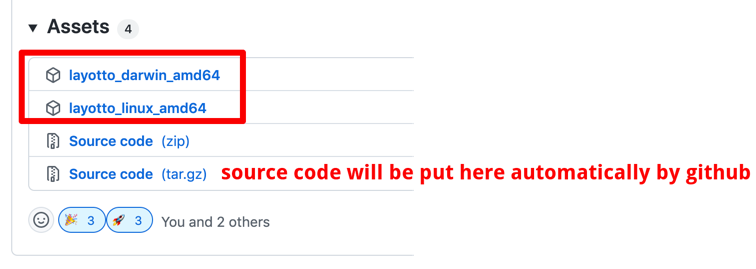Publish Handbook
What should be done by publishing a new version under this section
Publish Period
The Layotto publication cycle is tentatively scheduled to be issued on a quarterly basis.
Publish checklist
Step1: Check [Roadmap]for current iterations (https://github.com/mosn/layotto/projects)
- Check ongoing tasks
- Check unfinished tasks
- Confirm Task Status and Publish Content with Owner
Step2: Create Release tag, push to github, and check workflow
-
规范:请按照
v{majorVersion}.{subVersion}.{latestVersion}格式创建 tag。 -
Waiting for CI to end, confirm the following:
- CI Test Jobs through:
- Go code style verification
- Go code specification validation
- Go Unit Test
- Go Integration Test
- CI Multiplatform Artifacts build Jobs through:
- Linux/AMD64 Artifacts successfully built and uploaded
- Linux/ARM64 Artifacts successfully built and uploaded
- Darwin/AMD64 Artifacts successfully built and uploaded
- Darwin/ARM64 Artifacts successfully built and uploaded
- CI Multiplatform Image build/publish Jobs through:
- Linux/AMD64 Image successfully built and Push DockerHub
- Linux/ARM64 Image successfully built and Push DockerHub
- Image Tag specification:
- AMD64/X86 架构的镜像:
layotto/layotto:{tag} - ARM64 架构的镜像:
layotto/layotto.arm64:{tag}
- AMD64/X86 架构的镜像:
- Image Tag specification:
- CI Test Jobs through:

Step3: Draft a new release and prepare a release report
Publish reports can be automatically generated using the github's functionality before making changes based on the generated content.
Reference can be made to previous 发版报告

Step4: Upload Binars of Multi-Platform Architecture
Update:by 2022/05/04 is negligible.Release Pipeline from Layotto will automatically upload binary files without having to upload manually.PR See https://github.com/mosn/layotto/pull/566
If you do not upload automatically, you can manually download and upload the multi-platform Artifacts built in
Step 2

Step5: Confirm Publish
- Click to publish
- General information
- Check Roadmap, modify unfinished tasks in previous version, change milestone to next version
- If there is a SDK release, it needs to be published in the SDK repository and upload the central repository (e.g. Java SDK needs to be uploaded to Maven central repository).